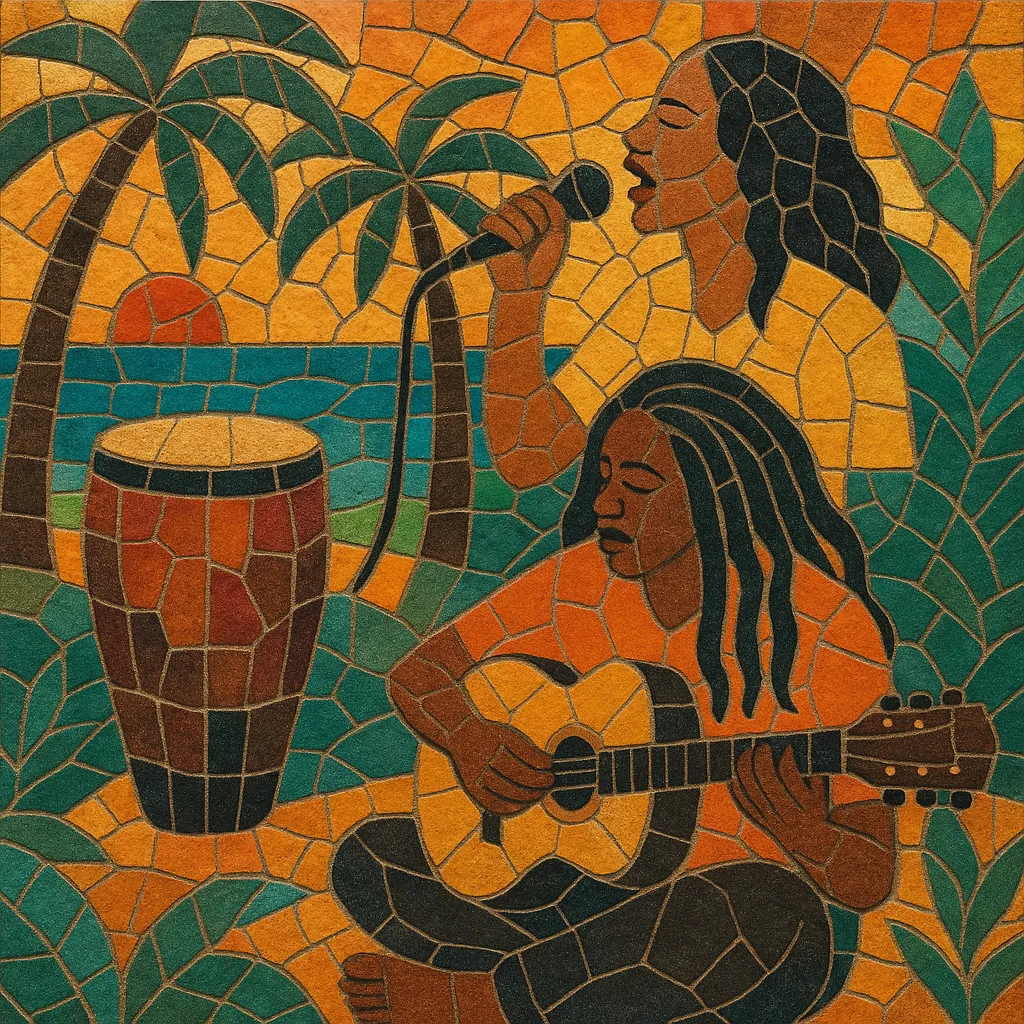
Pacific reggae is a regional wave of reggae that took root across Polynesia and wider Oceania, with New Zealand emerging as a central hub. It blends Jamaican roots reggae and dub with Polynesian and Melanesian vocal traditions, island percussion, and contemporary R&B/pop hooks.
The style is characterized by warm, melodic basslines, one‑drop or rockers drum feels, skanking rhythm guitar, Hammond/organ "bubble" patterns, and rich group harmonies. Artists often sing in English alongside Indigenous and local languages (e.g., Te Reo Māori, Samoan, Tongan, Hawaiian), addressing love, community, spirituality, and social justice while celebrating Pacific identity.
Jamaican reggae’s global spread in the 1970s reached the Pacific, where bands and local sound systems embraced its rhythms and messages. In New Zealand, groups like Herbs (formed in 1979) fused roots reggae and dub with Māori and Pasifika perspectives, singing about land rights, anti‑nuclear activism, and community. Around the same time, Hawaii developed a parallel scene that would later be labeled "Jawaiian," marrying reggae with local island pop and Hawaiian musical elements.
Through the 1990s, reggae became a key soundtrack for Pacific youth culture and Indigenous resurgence. New Zealand acts such as The Black Seeds and Fat Freddy’s Drop expanded the palette with soul, funk, and dub, while House of Shem and Katchafire doubled down on heartfelt roots, harmony vocals, and positive, family‑centered themes. The scene professionalized with dedicated festivals and strong community radio support, and artists began touring regionally across Polynesia, Melanesia, and beyond.
In the 2010s, Pacific reggae achieved sustained chart presence and international touring momentum. Artists like J Boog, The Green, Kolohe Kai, and Common Kings helped bridge traditional roots with contemporary R&B, pop, and light dancehall flavors, while maintaining uplifting messages and Polynesian identity. Today, Pacific reggae is a transnational network linking New Zealand, Hawaii, Samoa, Tonga, Fiji, and other islands, with multilingual lyrics, polished production, and community‑driven narratives remaining central to the sound.
Beyond music, Pacific reggae has served as a vehicle for cultural pride, language revitalization, and social commentary. Its emphasis on communal harmony, spirituality, and respect for land resonates across island nations and diasporas, reinforcing a distinct Pacific voice within the global reggae family.

